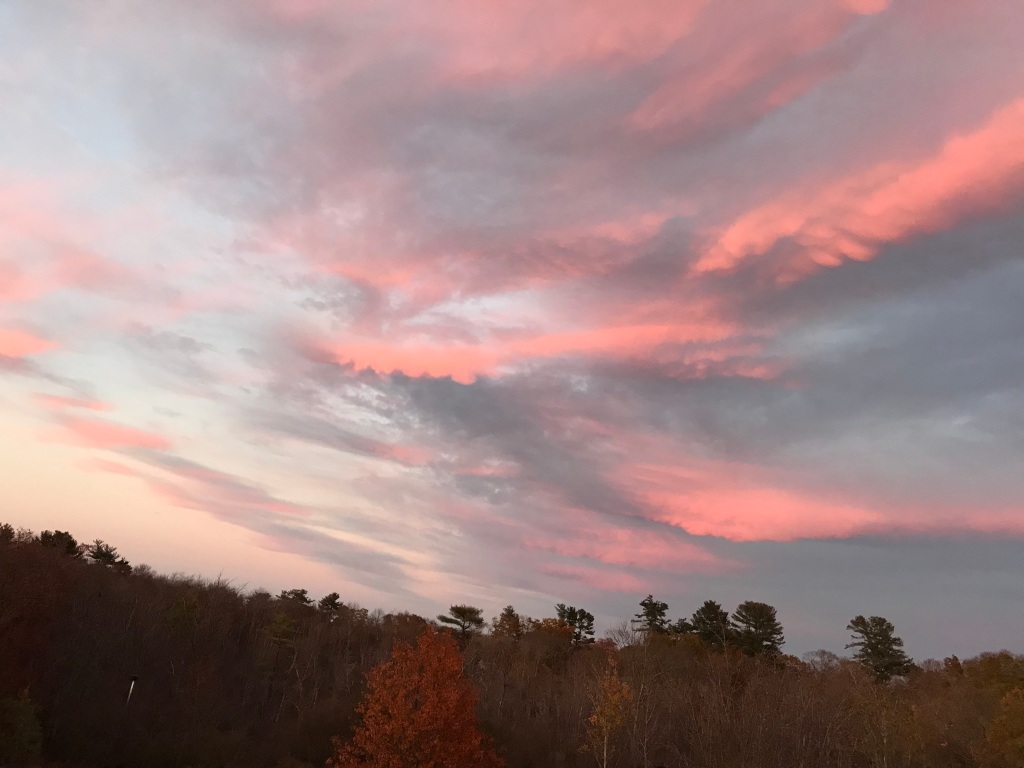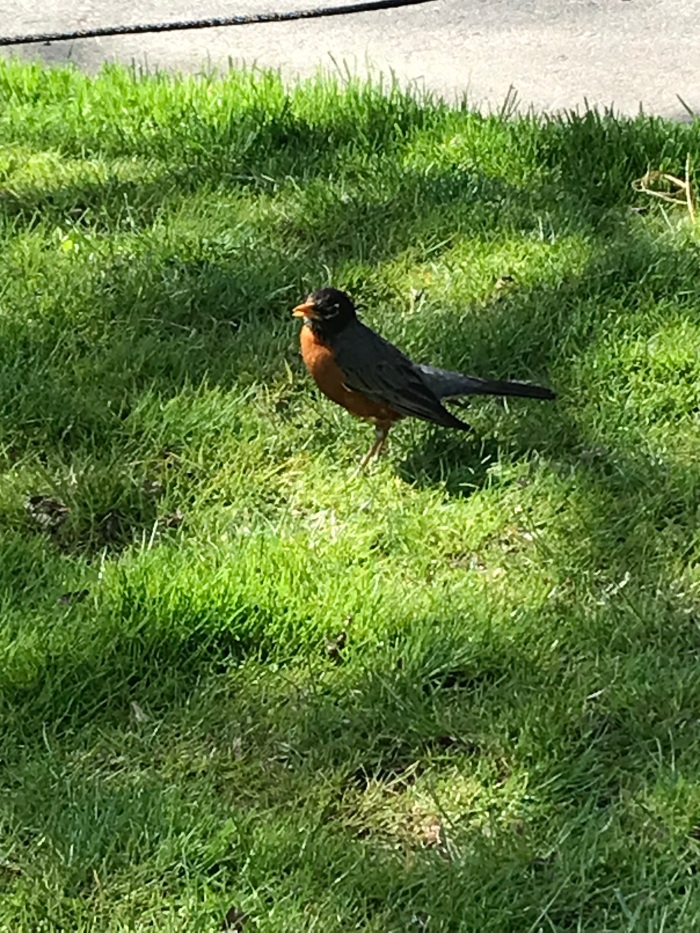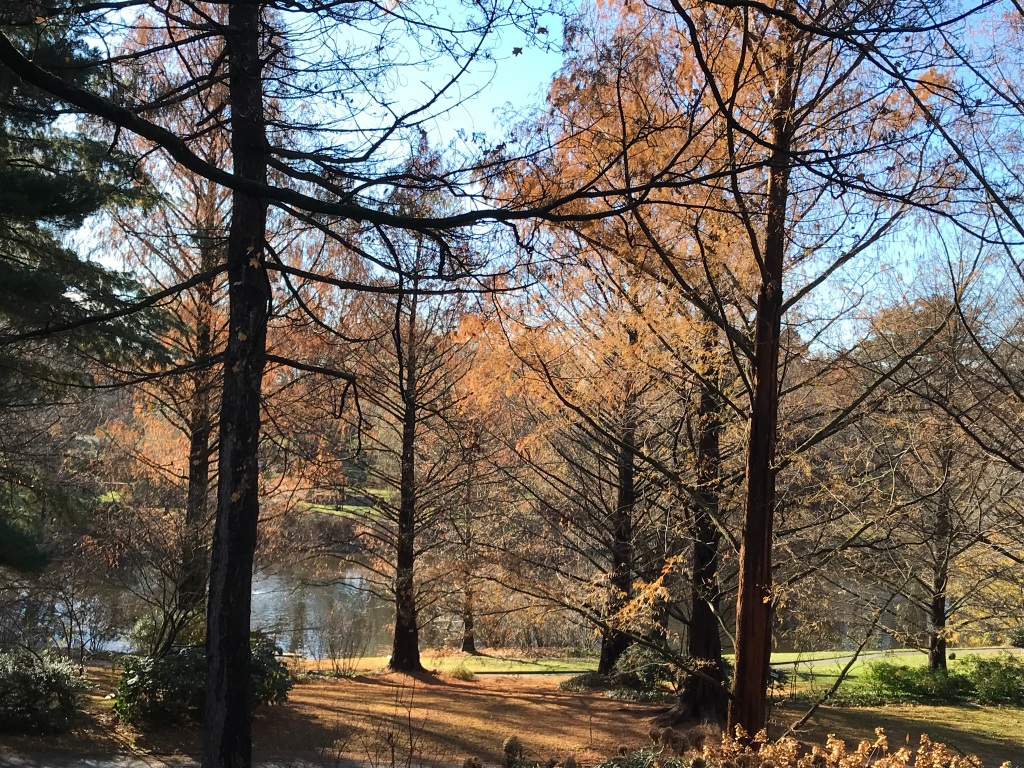Anne and I live now in a third-floor condo overlooking an expanse of woods. In the past, we’ve always lived in second-floor apartments, so this is a change of perspective. We are at bird level. Blue jays and robins fly past our windows. We see more of the sky and continuously changing cloud formations. The sunlight moves into the trees at sunrise and fades to shadow at dusk. From a distance, we see flocks of birds land on the tree branches. As they fly through the sky and perch in the treetops, birds take in a multi-level overview of their environment. From our windows, I am coming to know a bit of how they experience the world.
I’m a birdwatcher/birder, so I love to see birds close up, but I am learning more about their sounds in living here. Now I often hear the birds before I see them. Because I am familiar with many of their calls and songs, I can usually identify which birds are nearby (e.g., nuthatch, chickadee, goldfinch, flicker, Carolina wren, cardinal, downy and red-bellied woodpeckers); I recognize them from their sound vibration instead of the visual cues. As the weeks go by, I am finding my hearing is becoming fine-tuned. I hear the bird calls and songs more readily and more distinctly now. My experience of being with birds has become as much sound as sight, like listening to an invisible avian orchestra in the trees.
There is a legally blind woman who visits Mt. Auburn Cemetery during the spring bird migration, as I do. She has been a birder for more than 30 years, and as her vision declined, she learned to identify birds solely by sound (after two cochlear implants for hearing loss). In fact, her ability to recognize bird calls and songs is so highly developed that she often hears what others can’t yet see. Or is able to identify a bird that some are hearing but can’t find in the trees. As her physical circumstances changed, her life experience also shifted. She meets the world in a different way now, through sound.
The Maya calendar symbol Tzikin stands for “vision” and is represented by the eagle, who sees a vast panorama of Earth from the skies. Intuition and clairvoyance are traits associated with this sign. Thus, “vision” can mean inner seeing in addition to outer. I would add that it can also mean sound as well as sight. Flying overhead, owls hear the sound of a tiny mouse beneath the snow; robins hear earthworms moving below the grass and soil. We may not be as aurally skilled as birds, but how we each experience the world depends on our own unique physical abilities and life experiences. All of life involves an inner/outer process, so every time we move from one place to another, whether a few feet or many miles, our perspective shifts. Also, as our physical form changes, so too does the way we perceive and receive life.
My “bird’s eye view” where I live now, on an upper floor, includes a wider lens in many ways. But it also includes a deeper listening at every level. Taken together, I experience the world in a more expansive way. Each day I am reminded how the universe is composed of an infinite number of interconnected fractals, which give me and all living beings the opportunity to encounter worlds of wonder in every sight, sound, scent, taste, or touch as we move through our lives.






You must be logged in to post a comment.